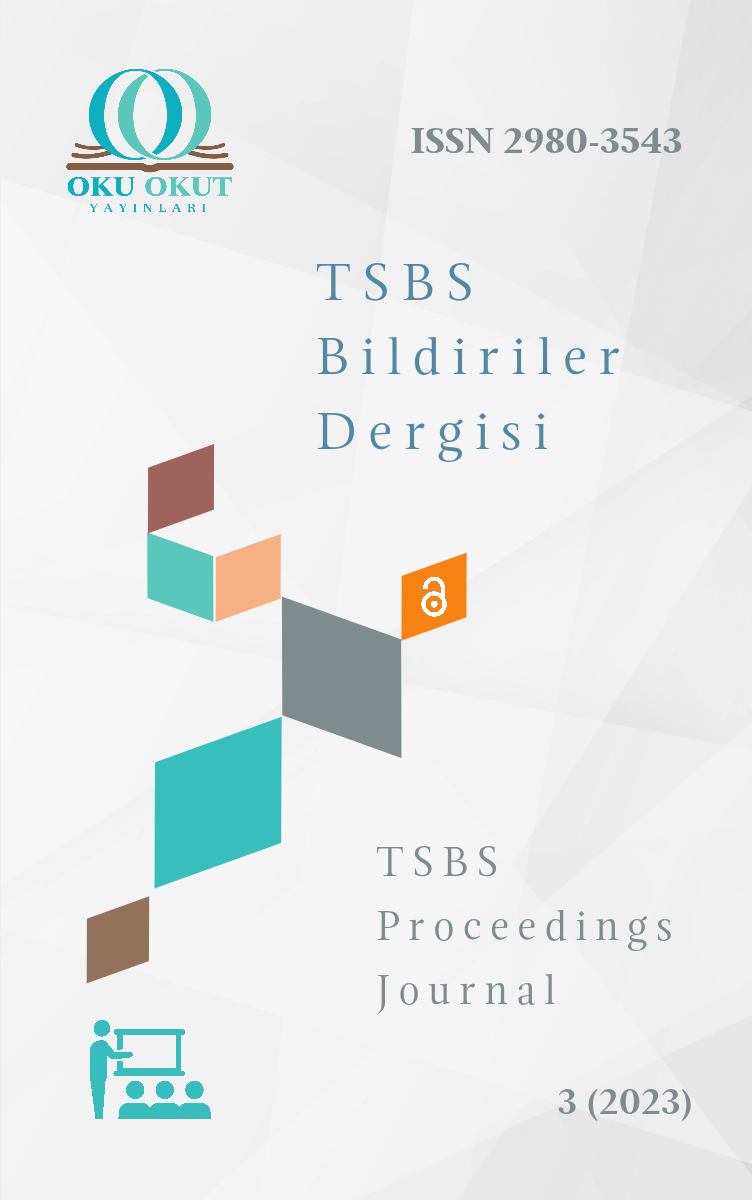The Perspective on Women and the Identification of Masculine Language in the Turkish Commentaries of Pend-nâme-i Attâr
Pend-nâme-i Attâr’ın Türkçe Şerhlerinde Kadına Bakış Açısı ve Eril Dilin Tespiti
One of the mirrors that best reflects the definition, meaning, feeling, course, change, and transformation of the image of women, which is hidden and censored in the subconscious of social memory, is literary literature. In pend-nāmas, one of the genres that show the view of classical Turkish literature on things, women, and society, the ideal society is imagined, and what the individual should do for this is explained in a simple and understandable style. This study aims to determine the perspective of the poet, the commentator, and thus the society on women, to try to read the place of women in society and to identify the masculine language used in these texts based on the commentaries made by the commentators of the classical Turkish literature period on Pend-nāme-i Attâr, one of the essential works of Persian literature. Although feminist research and gender studies have developed since the 1970s-1980s, it is possible to trace women in texts written in much earlier periods, considering that women are the mothers of society and the generation begins with her. Thus, it will be easier to follow the development of the centuries-long story of women and the changing perspective over time. In this study, in which the document analysis method, one of the qualitative research methods, was used, the largest Pend-nāme-i Attâr commentaries written in the 18th and 19th centuries in Turkish literature were preferred. The commentaries of the commentators on the source couplets in which women are in question were determined, and the intention was read. As a result, based on these commentaries, it was understood that it was not "women" but "women with bad morals" who were criticized. It has been concluded that the view that women with bad morals are beings who cause men to fall into heedlessness and, therefore, should be avoided has gained weight. The reason for the heavy criticism is that women have a high transformative and transformative effect on men and, thus, on society. In short, a woman is a man's weakness, and resisting her requires a strong will. Being aware of this, the masculine mentality actually appeals to its own ego by giving her advice. This emphasizes the fact that men and women are complementary beings and that the degradation of one inevitably leads to the degradation of the other. It is scientifically unsatisfactory to draw general conclusions from a few texts. For this reason, other texts of classical Turkish literature, which has a wide range of genres, should be analyzed one by one, and different perspectives, if any, should be identified. Subsequently, the reasons for the exclusion of women, their being regarded as half-witted, and their being regarded as passive being who must be constantly taken care of and managed will be explained with more concrete and realistic justifications.
Toplumsal hafızanın bilinçaltında saklanan, sansürlenen kadın imgesinin tanımını, karşıladığı manayı, hissettirdiğini, seyrini, değişimini ve dönüşümünü en iyi yansıtan aynalardan biri de edebiyat yazınıdır. Klasik Türk edebiyatının eşyaya, kadına, topluma bakışını gösteren türlerden biri olan pend-nâmelerde ideal toplum hayali kurulur ve bunun için bireyin yapması gerekenler sade ve anlaşılır bir üslupla anlatılır. Bu çalışmanın amacı Fars edebiyatının önemli eserlerinden biri olan Pend-nâme-i Attâr’a klasik Türk edebiyatı dönemi şârihleri tarafından yapılan şerhlerden hareketle kadına şâirin, şârihin dolayısıyla toplumun bakış açısını tespit etmek, kadının toplumdaki yerini okumaya çalışmak ve söz konusu metinlerde kullanılan eril dili tespit etmektir. Feminist araştırmalar ve toplumsal cinsiyet çalışmaları 1970-1980’li yıllardan sonra gelişme gösterse de kadının toplumun annesi olması ve neslin onunla başladığı düşünülerse çok daha erken dönemlerde kaleme alınan metinlerde kadının izini sürmek mümkündür. Böylece kadının asırlardır süren hikayesinin gelişimini ve zamanla değişen bakış açısını takip etmek daha kolay olacaktır. Nitel araştırma yöntemlerinden doküman analiz yönteminin kullanıldığı çalışmada Türk edebiyatında 18. ve 19. yüzyılda kaleme alınan hacimce en geniş Pend-nâme-i Attâr şerhleri tercih edilmiştir. Kadınların sözkonusu olduğu kaynak beyitlere şârihlerin yaptığı şerhler belirlenerek niyet okuması yapılmıştır. Neticede bu şerhlerden hareketle yerilenin “kadınlar” değil “kötü ahlaklı kadınlar” olduğu anlaşılmıştır. Kötü ahlaklı kadınların erkekleri gaflete düşüren bu sebeple uzak durulması gereken varlıklar olduğu görüşünün ağırlık kazandığı sonucuna ulaşılmıştır. Ağır eleştirilerin yapılma sebebinin de kadının erkek dolayısıyla toplum üzerindeki değiştirici ve dönüştürücü tesirinin yüksek olmasıdır. Kısacası kadın erkeğin zaafıdır ve ona karşı koyması sağlam bir irade gerektirmektedir. Bunun farkında olan eril zihniyet ona öğüt vererek aslında kendi nefsine hitap etmektedir. Böylece erkek ve kadının birbirini tamamlayan varlıklar olduğu birinin bozulmasıyla diğerinin de bozulmasının kaçınılmaz olduğu gerçeği vurgulanmaktadır. Birkaç metinden hareketle genel kanaate varmak bilimsel olarak tatmin edici değildir. Bu sebeple tür olarak geniş bir yelpazeye sahip olan klasik Türk edebiyatının diğer metinleri de teker teker incelenerek varsa farklı bakış açıları tespit edilmelidir. Akabinde kadının dışlanmasının, yarım akıllı olarak kabul edilmesinin, sürekli sahip çıkılması yönetilmesi gereken pasif bir varlık olarak telakki edilmesinin sebepleri daha somut ve realist gerekçelerle açıklanabilecektir.

Telif Hakkı (c) 2023 Dr. Sema Levent
Bu çalışma Creative Commons Attribution-NonCommercial 4.0 International License ile lisanslanmıştır.
CC BY-NC 4.0 lisansı, eserin ticari kullanım dışında, her türlü ortam ve formatta paylaşılmasına, kopyalanmasına, çoğaltılmasına ve orijinal esere uygun şekilde atıfta bulunmak kaydıyla yeniden düzenlenmesine, dönüştürülmesine ve eser üzerine inşa edilmesine izin verir.
Makale Bilgileri
- Konu Türk Dili ve Edebiyatı
- Gönderim 19 Temmuz 2023
- Yayım 16 Ağustos 2023
- Sayı Sempozyum 3 (2023): TSBS Bildiriler Dergisi
- Bildiri Bilim Alanı Türk Dili ve Edebiyatı
- Kategoriler
Levent, Sema. “Pend-nâme-I Attâr’ın Türkçe Şerhlerinde Kadına Bakış Açısı Ve Eril Dilin Tespiti”. Türkiye Sosyal Bilimler Sempozyumu 3 (August 16, 2023), 349-352. https://doi.org/10.55709/TSBSBildirilerDergisi.429






